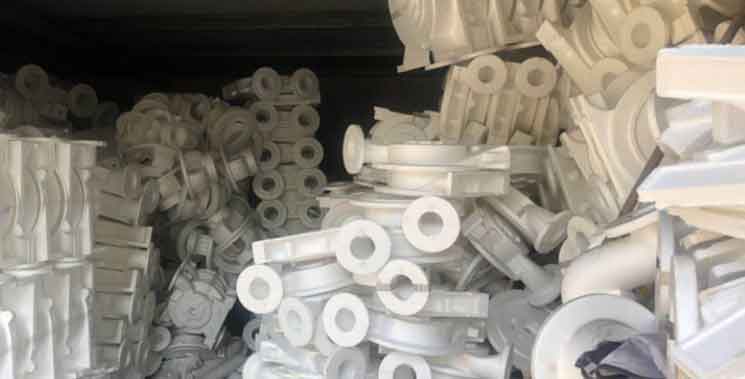Preventing and minimizing defects in lost foam casting processes requires careful attention to various factors throughout the casting process. Here are some key considerations to help prevent and minimize defects:

- Pattern Design and Production:
- Use high-quality foam patterns with low decomposition rates and dimensional accuracy.
- Ensure uniform thickness and proper gating in the pattern.
- Verify the pattern’s compatibility with the casting material.
- Mold Coating:
- Apply high-quality refractory coatings to the foam pattern to enhance surface finish and minimize defects.
- Ensure consistent and uniform coating thickness to prevent metal penetration.
- Mold and Mold Handling:
- Properly store and handle molds to prevent damage and distortion.
- Ensure mold alignment and secure clamping to prevent shifting or movement during pouring.
- Foam Pattern Removal:
- Implement controlled and gentle removal of foam patterns to avoid mold damage or distortion.
- Use appropriate techniques such as vibration or pneumatic methods to remove patterns without causing mold erosion.
- Mold Venting:
- Ensure proper venting of the mold to allow gases to escape during pouring.
- Optimize vent placement and size to prevent gas porosity and incomplete filling.
- Pouring Parameters:
- Control pouring temperature to prevent excessive metal shrinkage or overheating.
- Optimize pouring rate and time to achieve complete filling and reduce turbulence.
- Riser Design:
- Design and position risers properly to provide adequate feeding and minimize shrinkage porosity.
- Use a sufficient number of risers to ensure proper feeding throughout the casting.
- Metal Quality and Treatment:
- Ensure the quality of the molten metal by using appropriate alloys and performing necessary treatment processes.
- Use degassing and filtration techniques to remove impurities and minimize gas and inclusion defects.
- Solidification Control:
- Implement cooling techniques and controls to optimize solidification and minimize shrinkage and thermal stress-related defects.
- Consider the use of chills or cooling inserts to influence solidification in critical areas.
- Quality Control and Inspection:
- Implement regular inspection and quality control procedures to detect and address defects early.
- Use non-destructive testing techniques such as X-ray or ultrasonic testing to identify internal defects.
- Process Optimization:
- Continuously monitor and analyze the casting process to identify areas for improvement.
- Utilize computer simulations to optimize process parameters and predict potential defects.
By implementing these measures and continuously improving the process based on feedback and analysis, it is possible to prevent and minimize defects in lost foam casting, resulting in high-quality castings with minimal rework and scrap.
